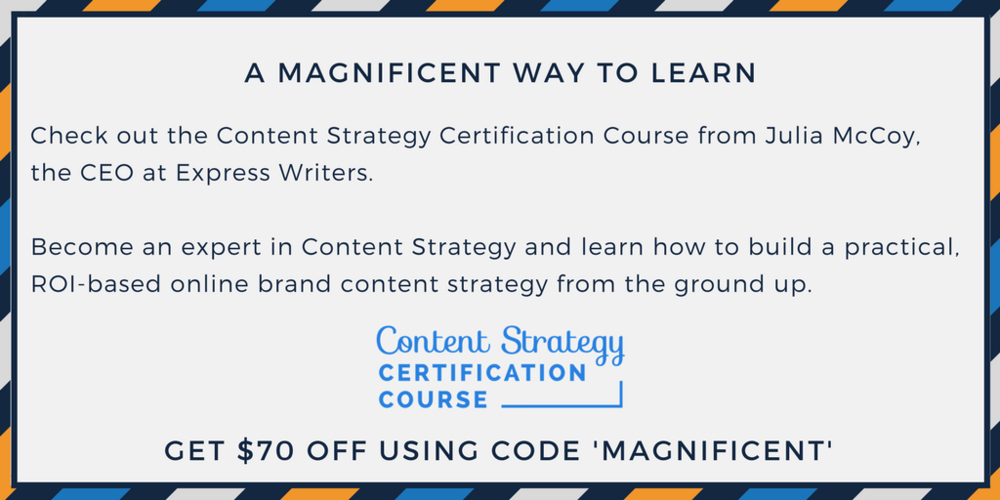No one has time or money to waste.
Both are precious and should be used wisely.
That’s why so many people – including individuals as well as companies – are so focused on improving productivity.
One of the best ways to be more productive is to eliminate challenges quickly and efficiently.
In your company, you may find that your sales and marketing teams have challenges that slow down their production and, therefore, your profits.
What can you do to help them?
Your goal should be to help your team get everything they can out of every ounce of effort they put into their projects.
According to Pam Didner, the best way to make that happen is with sales enablement.
What Is Sales Enablement and How Can It Help Your Company Thrive?
Pam has been in the corporate world for over 20 years. During her tenure, she’s worked in various positions, which has given her a more holistic view of how a company runs.
She uses this knowledge to think strategically about what it will take to make a company successful, which she turns into big picture action moves, plans, and tactics.
Pam says sales enablement centers on providing central technology-based training, onboarding, coaching, and a map outlining your customer’s journey.
During her research on the topic, Pam found that sales enablement was made up of six common elements. These include:
Training
Coaching
Content
Technology
The process.
So, in her words, the definition of sales enablement is this:
“To deliver a positive off-line and online experience for their customers, your teams need to be equipped with the right knowledge, skills, processes, and digital tools. They also need to work closely with other teams in a cross-functional collaboration that can increase sales velocity and productivity.”
Ultimately, it’s all about the customers.
If there is no customer, there are no sales.
You need to deliver a solid customer experience, and you can do that by making sure that the marketing and sales team work together in alignment and have all the tools they need.
Pam describes a company this way:
Your sales people are soldiers. You are the sergeant who gives them the know-how, equipment, and technology needed to get the job done.
Steps to Keep Your Soldiers Working Together for the Greater Good
Are you ready to give your sales and marketing teams the tools and training they need to help them work more efficiently?
Follow Pam’s steps below to help your team improve your teams’ efficiency and productivity, while enjoying their work and seeing results (read: Sales!) from their efforts.
1. You Must Identify Your Market
The buyer’s persona is critical for both teams, and they might not always be the same for each team. Why is this?
Let’s consider a car manufacturer like Toyota.
Who is their target market?
Well, for the marketing team, the persona they’re dealing with is potential car buyers. The direct sales team, however, don’t sell cars directly to individual car buyers. They have to sell the cars to the dealerships who, in turn, sell the cars to the buyers.
Thankfully, this doesn’t necessarily mean you need to do double the amount of work. You can actually leverage your content.
For instance, the content you use for the marketing team can be shared with the sales team. In turn, the sales team can pass that information along to the dealers who will end up sharing it with their buyers.
This is called “pass through” content and it will save both of your teams a lot of time.
2. Invest in a Good Content Management Tool or System
The goal with sales enablement is efficiency. That’s why you need a content management system. This tool will allow you to store all of your information in a database that each team can access.
They also allow you to tag your information so you can categorize your products, research, etc. This benefits your team because it makes the information searchable and easy to access.
When tagging, you don’t just want to tag content with “sales” or “marketing” tags. You want to tag it in such a way that each team can find the information they need at each stage of the marketing and sales processes.
You can tag info as it relates to each step of the purchasing journey, by product, by technology, and by persona.
3. Encourage Communication Between Your Teams
Even if you have the best tagging system in place, finding the right information can be frustrating if you’re trying to meet a deadline, under stress, or need information for a customer right this second.
Communication between teams can definitely reduce the pressure.
Encourage your sales people to send an email or text to the marketing team asking for help. It can be something as simple as: “I’m doing this and I need to find a piece of content. Can you help me?”
Of course, you don’t want this to turn into a habit, otherwise your marketing team will soon feel bombarded.
However, every once in a while, it’s perfectly fine because, ultimately, you’re saving time.
Think of it this way: Time spent searching for information could be time spent reaching a customer. So, if those in sales really cannot find anything any other way in a reasonable amount of time, let them know it’s okay to ask for help.
Your Teams Need the Right Tools and Training – Just Like Soldiers
Can you imagine what would happen if soldiers were sent out into battle without the proper training, tools, or direction?
It would be a disaster.
Similarly, your teams need to have the proper training, tools, and direction in order to contribute to the success of the business.
If you give them what they need, you can rest assured that you’ll appeal to your ideal customers, while watching your profit margin grow.
Would you like to know more about Pam’s sales and marketing strategies? If so, make sure to follow her on Twitter and check out her books, Global Content Marketing and Effective Sales Enablement. She also welcomes emails if you’d like to reach out with specific questions.
ABOUT PAM DIDNER
Pam Didner is a content marketing leader, author and speaker. She was Global Integrated Marketing Strategist at Intel where she led their product launches and worldwide marketing campaigns. Her boutique consulting firm advises companies including Intel, 3m, Sunstar, Insitu and Cisco.














